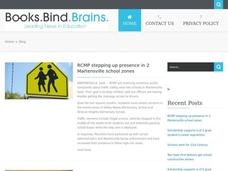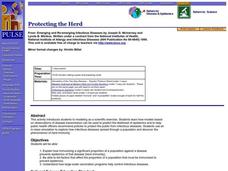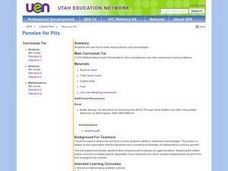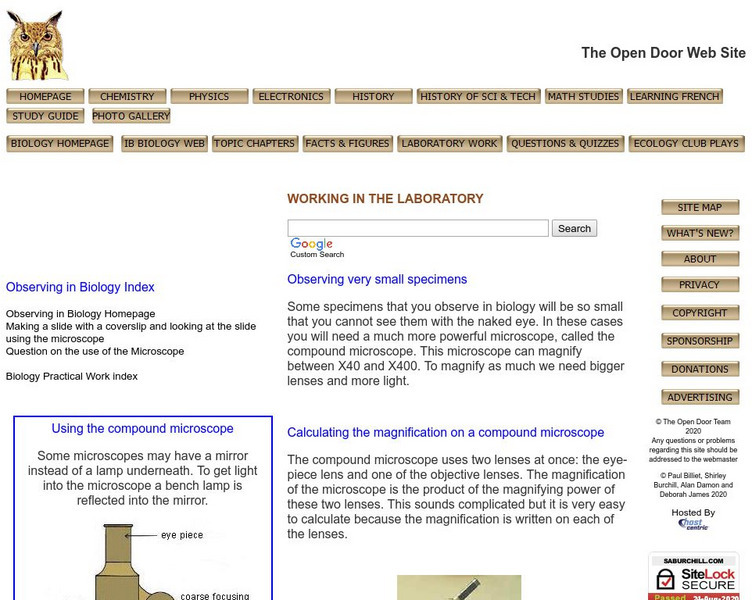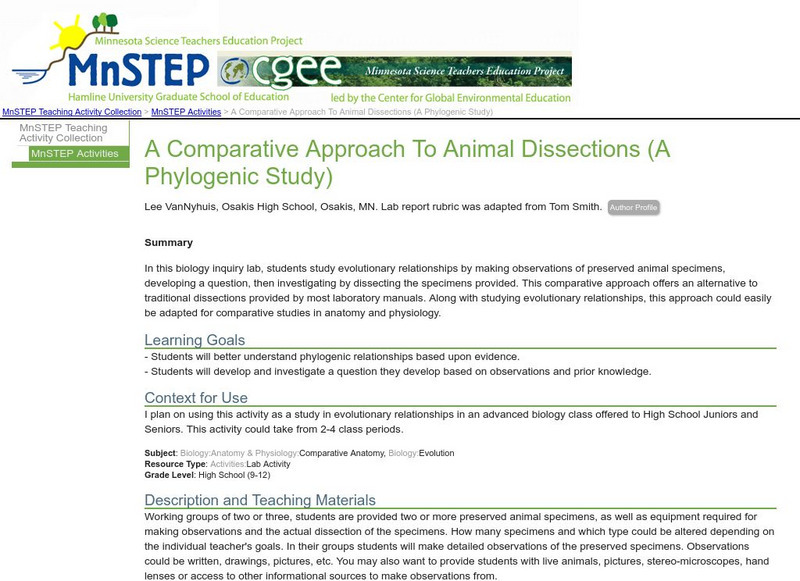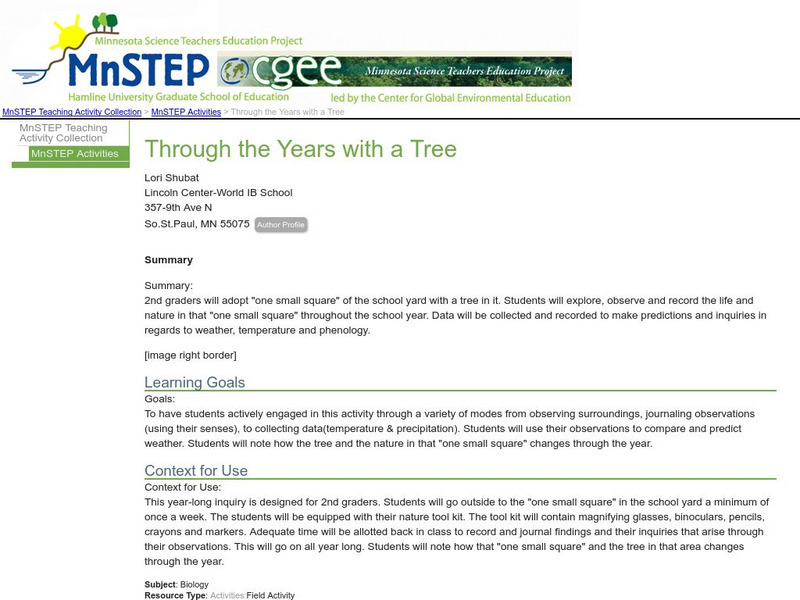Curated OER
Diversity of Life
Students study the classification of viruses and describe their structure. In this investigative lesson plan students complete an activity and answer questions about viruses.
Curated OER
Can Land Ethics Work?
Students evaluate the various purposes and issues surrounding the management of a nature preserve. They participate in discussion on whether there is intrinsic value in nature for its own sake.
Curated OER
Protecting the Herd
Students explain how immunizing a significant proportion of a population against a disease prevents epidemics of the disease (herd immunity). They list factors that affect the proportion of a population that must be immunized to prevent...
Curated OER
Light at the Bottom of the Deep, Dark Ocean?
Young scholars participate in an inquiry activity. They relate the structure of an appendage to its function. They describe how a deepwater organism to its environment without bright light.
Curated OER
Pennies for Pits
Sixth graders use the edible and nonedible parts of various fruits to determine percentages. Using measurements and appropriate tools are part of the lesson.
Curated OER
Biotic Factors
Students identify individual organism, a species, and a population within the study community. They identify biotic factors at the site and attempt to characterize the site's species diversity.
Curated OER
Optimal Foraging
Young scholars participate in a foraging activity that demonstrates environmental conditions playing an important role in determining the optimal foraging behavior of a particular organism.
Curated OER
Science: Hurricanes As Heat Engines
Students conduct Internet research to track the path of Hurricane Rita. They record the sea surface temperature of the Gulf of Mexico during and after the hurricane and draw conclusions about how hurricanes extract heat energy from the...
Curated OER
TE Activity: The Boxes Go Mobile
Students create a mobile of boxes and cubes that they made in a previous lesson that can be accessed from this page. They design the mobile using method that an engineer would use to balance the items based on surface areas and volumes.
Curated OER
Dishing the Dirt Part 1
Students create a soil center on their school grounds. They begin to write in their science journals. They participate in an experiment that helps the community begin their own gardens.
Other
The Evidence for Evolution: Biogeography
These pages are part of a site called "Evolution," that accompanies a textbook by the same name. Mark Ridley is the author. These pages are about the house sparrow and the differences that can be observed in it in different geographical...
TED Talks
Ted: Ted Ed: Why Is Yawning Contagious?
*Yaaawwwwwn* Did just reading the word make you feel like yawning yourself? Known as contagious yawning, the reasons behind this phenomenon have been attributed to both the physiological and psychological. It's been observed in children...
Science Education Resource Center at Carleton College
Serc: Investigating Oranges How Many Sections Are Inside?
For this biology investigation students will be asked to attempt to determine how many sections exist in an orange without having peeled it. Students will work in small cooperative groups. Each group will be able to use a small...
Open Door Team
Open Door Web Site: Biology: Calculating Magnification on a Compound Microscope
Learn how to calculate the total magnification of a microscope on this concise site. Links to making a slide, questions on the use of the microscope, and other related microscope topics are included on this site.
Science Education Resource Center at Carleton College
Serc: A Comparative Approach to Animal Dissections (A Phylogenic Study)
In this biology inquiry lab, students study evolutionary relationships by making observations of preserved animal specimens, developing a question, then investigating by dissecting the specimens provided. This comparative approach offers...
Science Education Resource Center at Carleton College
Serc: Through the Years With a Tree
Students explore, observe, and record the life and nature in their adopted "one small square" throughout the school year. As they collect data, they make predictions and inquiries in regards to weather, temperature, and phenology.
Other
Fagler College/nas 111/scientific Methodology
Power Point presentation on scientific method for NAS 102 Human and Environmental Biology II.
TeachEngineering
Teach Engineering: Corn for Fuel?!
In this activity, students examine how to grow plants the most efficiently. They imagine that they are designing a biofuels production facility and need to know how to efficiently grow plants to use in this facility. As a means of...
TeachEngineering
Teach Engineering: Creepy Silly Putty
Students learn about viscoelastic material behavior, such as strain rate dependence and creep, by using silly putty, an easy-to-make polymer material. They learn how to make silly putty, observe its behavior with different strain rates,...


